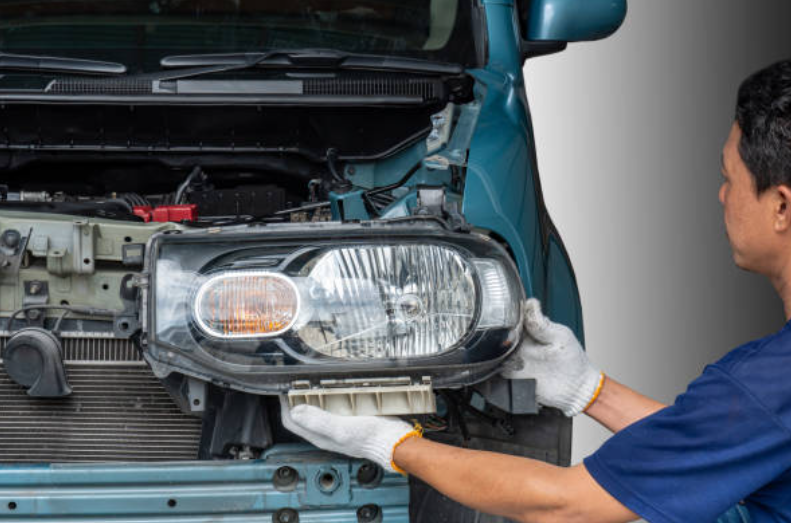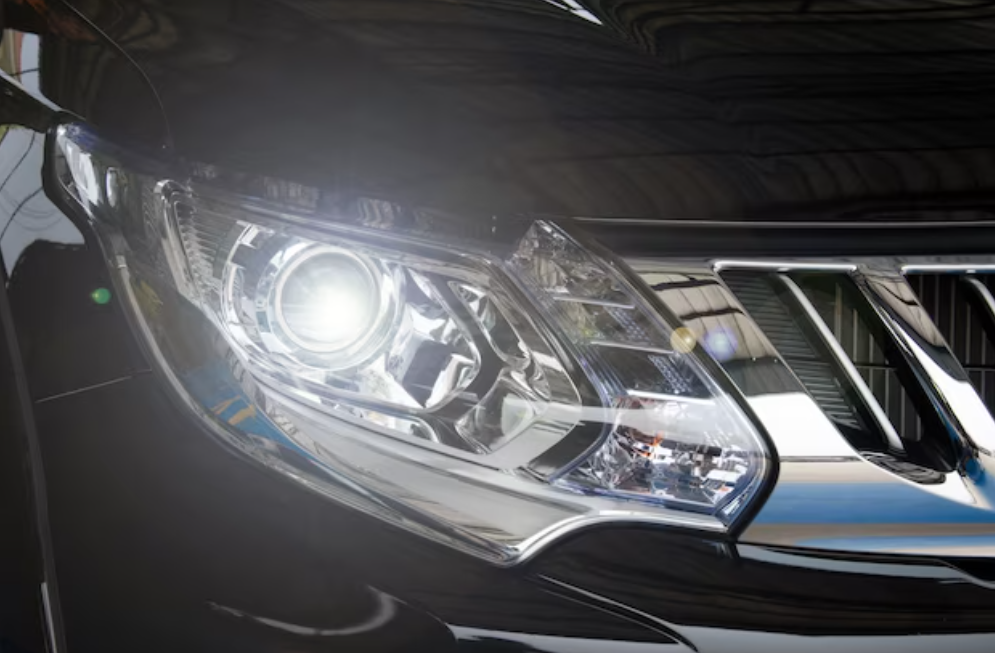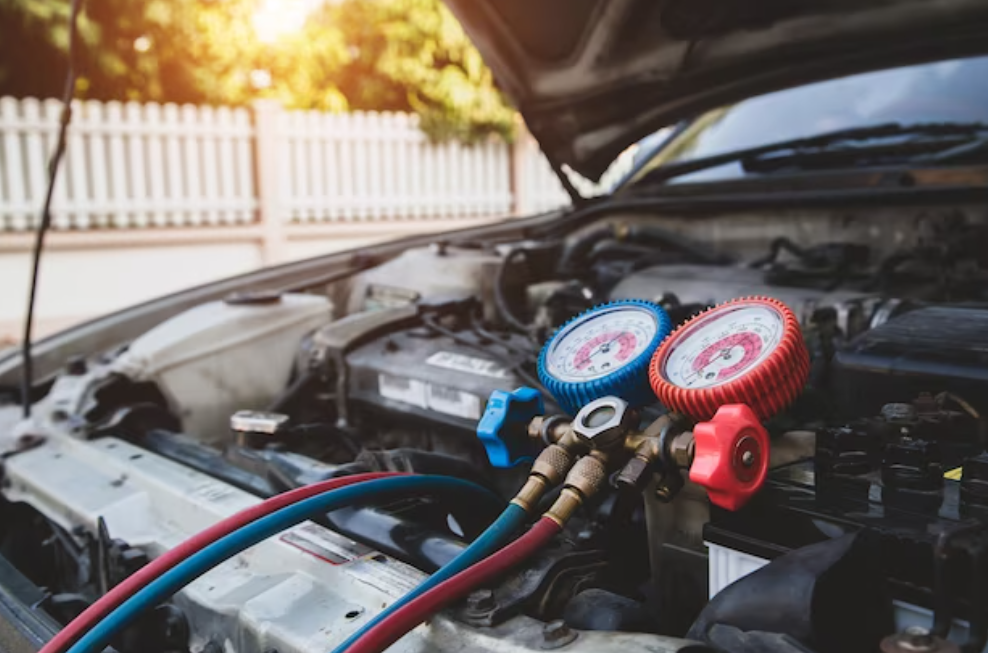How to Adjust Headlights
Maintaining precise alignment for your car's headlights isn't just about safety; it's also a key factor in minimizing glare and enhancing nighttime visibility. While adjusting headlight beams is a relatively straightforward task for most vehicles, if you're new to it, it might appear daunting. In this guide, we'll provide expert insights into the essential steps required to guarantee your headlights are accurately and effectively adjusted. Keep reading to gain the knowledge you need to confidently adjust your vehicle's headlights, enabling you to navigate with assurance in all lighting scenarios!

What Are the Benefits of Properly Aligned Headlights?
Properly aligned headlights offer a multitude of benefits, significantly enhancing driving safety and comfort. By illuminating the road evenly and efficiently, they greatly improve visibility, particularly during nighttime or adverse weather conditions. Moreover, correctly aimed headlights minimize glare for oncoming drivers, fostering a safer road environment. They provide an optimal lighting range, enabling drivers to detect potential hazards promptly without causing discomfort to others.
Beyond safety, well-aligned headlights reduce eye strain, leading to a more comfortable and less fatiguing driving experience. Ensuring your headlights are aligned not only enhances safety but also contributes to extended bulb life, compliance with regulations, and even vehicle aesthetics, making it a vital aspect of responsible vehicle ownership.

1. Prepare Your Vehicle:
- Park your car on a level surface, facing a flat wall or garage door. Ensure the vehicle is at its normal ride height, meaning it should have the usual load of passengers and cargo.
2. Measure the Distance:
- Measure and mark a horizontal reference line on the wall at the same height as the center of your headlights. You can use masking tape or chalk for this purpose.
3. Turn On the Headlights:
- Turn on your headlights to their normal setting, which is usually the low beam.
4. Observe Headlight Beam Placement:
- Position yourself about 25 feet (7.6 meters) away from the wall and carefully inspect the headlight beams' positioning on the surface. Ideally, you should see clear, well-defined patches of light, with the upper edges of the beams precisely matching the horizontal reference line you previously marked.
5. Check for Symmetry:
- Ensure that both headlights are level and symmetrical. The center of each beam should align with the vertical centerline of your vehicle, which should be directly in front of the headlights.
6. Adjust If Necessary:
- If the headlight beams are misaligned, you'll need to adjust them. Most vehicles have adjustment screws near the headlights. Refer to your vehicle's owner's manual to locate these screws.
- Use the appropriate tools (typically a screwdriver or socket wrench) to turn the adjustment screws. Adjust the screws until the headlight beams are properly aligned with the horizontal reference line and each other. The vertical adjustment screw controls the up and down positioning, while the horizontal adjustment screw controls the left and right positioning.
- Make small, incremental adjustments and frequently check the headlight beam placement until they are correctly aligned.
7. Test on the Road:
- After adjusting the headlights, take your car for a short test drive to ensure that the beam placement is adequate for actual driving conditions. You should also verify that the beams do not blind oncoming drivers.
8. Recheck Periodically:
- Headlight alignment can shift over time due to factors like wear and tear or changes in vehicle load. It's a good practice to recheck your headlight alignment periodically and readjust as needed.

Step 1: Collect Your Tools
Before you begin, gather the necessary tools:
- A screwdriver or a socket wrench (size may vary depending on your vehicle)
- Measuring tape
- Masking tape or chalk
- A level surface to park your vehicle on
Step 2: Prepare Your Vehicle
- Park your car on a level surface, facing a flat wall or garage door, approximately 25 feet away.
- Ensure your vehicle is loaded as it would be during normal driving conditions (with passengers and cargo).
Step 3: Locate Headlight Adjustment Screws
Most vehicles have two adjustment screws per headlight:
- Vertical adjustment screw: Controls the up and down positioning of the headlight beam.
- Horizontal adjustment screw: Controls the left and right positioning of the headlight beam.
Step 4: Masking or Chalking
- To ensure accuracy, mark the vertical and horizontal centerlines of your headlights on the wall using masking tape or chalk. This will serve as your reference points.
Step 5: Set the Initial Height
- Turn on your headlights and use the vertical adjustment screw to align the top of the light beam with the horizontal reference line you marked earlier. This ensures your headlights are at the correct height.

Step 6: Check for Symmetry
- Ensure that both headlights are level and symmetrical. Adjust the other headlight to match the first one, using the horizontal adjustment screw.
Step 7: Adjust the Lateral Aim
- Now, adjust the lateral aim. With the horizontal reference line as your guide, use the horizontal adjustment screw to align the center of the light beam with the vertical reference line.
Step 8: Verify Proper Aim
- After making adjustments, back up your vehicle to approximately 25 feet from the wall and check the headlight beam alignment. It should be even, without excessive glare or being too low on the road.
Step 9: Fine-Tune If Necessary
- If you notice any issues, fine-tune the adjustments incrementally until both headlights are correctly aligned.
Step 10: Recheck After Changes
- Whenever you make changes to your vehicle's load or install new headlights, it's crucial to repeat this process to ensure optimal headlight alignment.

Maintaining proper headlight alignment is an essential part of responsible vehicle ownership, contributing significantly to road safety. Regularly inspecting and adjusting your headlights ensures that you have optimal visibility while driving, especially during low-light conditions. It also helps prevent issues such as blinding oncoming drivers, reducing the risk of accidents.
To maintain alignment, it's essential to use the correct bulbs, inspect for damage, and load your vehicle evenly. Additionally, after making changes to your vehicle's suspension or replacing components, having a professional mechanic verify and adjust the headlight alignment can provide peace of mind and ensure safety on the road.
-
Can I adjust my headlights if I've changed my vehicle's suspension or added heavy cargo?
Changes in suspension or uneven weight distribution can affect headlight alignment. If you've made significant modifications to your vehicle, it's advisable to have a professional mechanic verify and adjust the headlight alignment to ensure accuracy and safety.
-
Can I adjust my headlights to point higher for better visibility?
While it may be tempting to adjust headlights for maximum visibility, it's essential to align them according to manufacturer specifications and local regulations. Raising headlights excessively can blind oncoming drivers and create safety hazards.
See more review here: Top 10 Pocket Hole Jigs For Your Woodworking Projects















